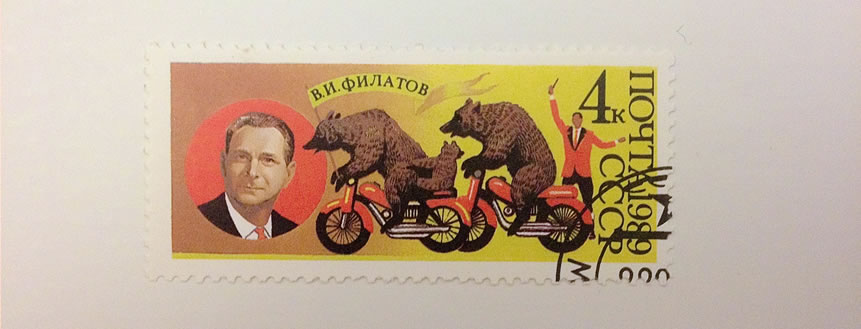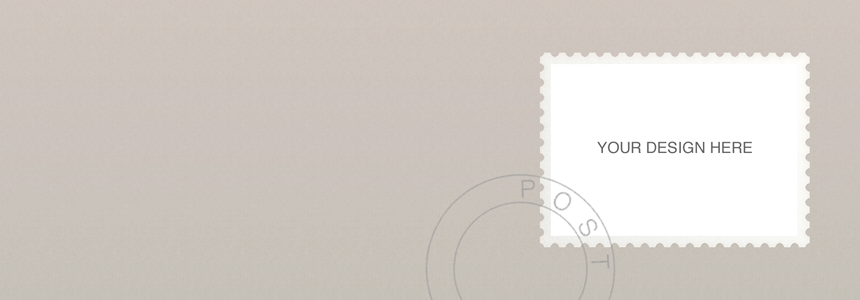
Stamps
/89
I have a confession to make… I collect stamps. I have hundreds of them. Yeah, it may not be one of the coolest hobbies in the world, but give me a minute and I'll explain why I do it.
I haven't gone out of my way to collect them – apart from a few years as a Brownie. We were encouraged to bring in used stamps with us each week in exchange for a dried kidney bean (a Brownie point). I kept the ones I liked, I'm not sure what they did with the rest.
Most of my stamps are from collections friends and family gave to me. A good few are from my dad's office. They had clients sending letters from all over the world, and the people who worked in the post room very kindly tore off the corners of envelopes, and my dad would take a bundle of them home every week.

Getting the stamps off the envelopes was often fiddly. They had to be soaked in water, then left to dry on blotting paper. I would go to WHSmith and buy bags of little stamp hinges, and stick them in a book with all the countries in it, but that rapidly filled up. Now my stamps live in a couple of big ringbinders, tucked into special display sheets.
Once I'd managed to separate the stamps from their envelopes, there was the challenge of trying to work out which country they were from. Each is written in its own language, so figuring out where one was from when the country name was written in Arabic was tricky. It did make me quite good at learning the names though, and I very quickly learnt the difference between Korean, Japanese and Chinese script.

Often I'll find a stamp from a country that no longer exists, or has the former name. They're artefacts, a snapshot of a culture, its politics, from a time when people used to send and receive letters much more frequently.
Despite having a collection, I don't regard myself as a real philatelist. I'm not remotely interested in the value of any given stamp, I'm not precious about them, and I'm pretty sure some of them are replicas. It's purely the designs I'm interested in.

I'm fascinated by what countries choose to print on their stamps because it says so much about how they want other people to perceive them, or what they value most about their country.
They're like a miniature postcard or tourist advertisement. Some stamps have beautiful typography, others it's the complete opposite, but it's still charming. The more recent stamps are photographs of people or places. The older ones are block colours, many featuring royalty or politicians. I think it says a lot about a country when practically every stamp is a picture of their president.
Every stamp is a little Geography or History lesson. It makes me want to learn more about a place.



Some countries love to show off their local nature, predominantly birds and fauna. History also features a lot, as well as sports, science and art. I love the space ones.

But stamps are a casualty of technology. They are being replaced with faceless bar codes that speak nothing of the origin's culture. I'm not that nostalgic about the past, and it's an understandable cost of progress, but I will miss that human element that stamps have.

Design Challenge
I've prepared a little design challenge, if you'd like to take part.
A postage stamp can be the equivalent of an elevator pitch, where the pitch is on what your country is about, whether it's "we're great at engineering", or "we're really proud of our architecture".
If you had just a thumb-sized piece of paper to describe yourself, your company, your local area or your country, what would it look like? What's the most important thing you'd want to show that sufficiently projected your culture or values?

There are a couple of bits of information you'll need to put on your stamp:
- Your name/company name/country name in your own language*
- A price (in your own currency)
- The year (optional)
* If you're based in the United Kingdom, you can use the Queen's head instead of the name. This is unique to the UK, being the country where adhesive stamps originated. (Thank you Paul Lloyd for this information)
It doesn't have to be rectangular. Some stamps are squares, triangles and even circles, but they should be small enough to fit in the corner of a postcard.
I've made a template you can use – it's an editable .png file. If you're a Dribbble user, please rebound my shot, and since everything these days has a hashtag, let's go with #thisismystamp.